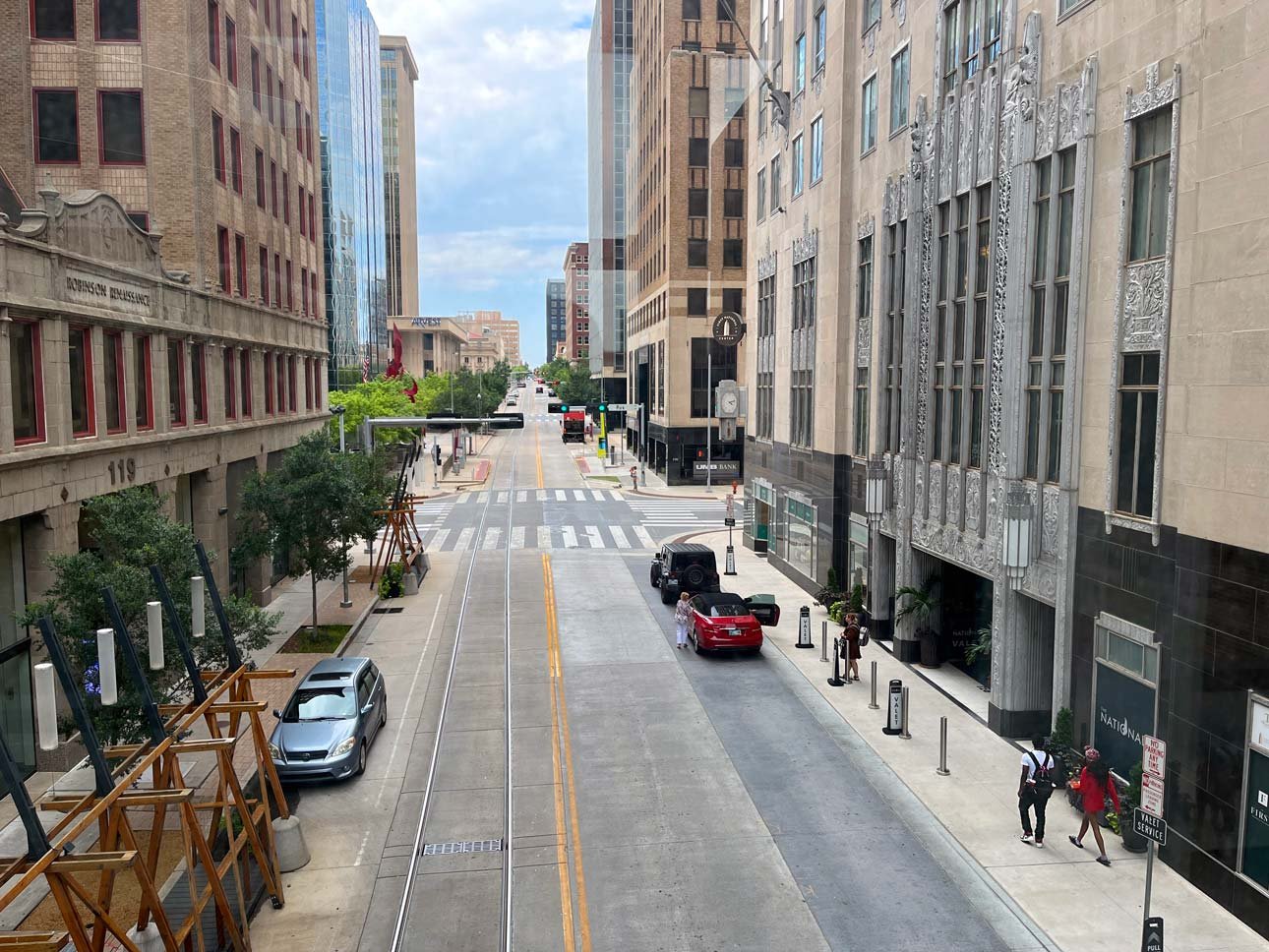OKC UndergrounD
Tunnel Tour
Happy 50th, OKC Underground!
Opened August 5, 1974, these tunnels connect offices and garages for pedestrian convenience. They were built during urban renewal that forever changed the heart of downtown by demolishing smaller historic buildings to erect modern office towers and parking garages.
On this OKC Underground Tour, we point out modern art installations and historic photos of downtown to explore the past while not worrying about the present weather.
You can freely walk the OKC Underground on your own, or see highlights and learn about history with us! We’ll even tell you about secretive spaces below Robinson Avenue that housed Chinese men and their gambling dens through WWII.
• up to 1 hour
• 0.75 miles
• $20 adult | $10 child 12-17 | $5 under 12
A minimum of 2 adults are needed to run this tour.
Does okc have underground tunnels?
We sure do! Oklahoma City’s underground tunnels connect downtown offices, hotels and parking garages while being sheltered from our notorious weather. (Twisters, anyone? Actually, the tunnels are not intended to serve as a storm shelter.) Running one mile in length, some office workers walk these hallways for lunchtime exercise.
Second floor skywalks bridge buildings like Leadership Square, Oklahoma Tower, Robinson Renaissance and First National Center.
How do I get to Underground tunnels in OKC?
The tunnels are open Monday–Friday (6am to 8pm) and closed on weekends and holidays.
Access points to get underground include stairs at First National Center (enter on Broadway b/t Park Ave and Main St) or escalators and elevators at BancFirst Tower across the street at 100 N. Broadway. This southeastern part of the tunnel system is closest to hotels on Broadway and the Bricktown area.
The Google Maps pin for OKC Underground is at a less convenient point to the north.
What’s the history of underground tunnels in OKC?
The oldest tunnel was built by oilman WB Skirvin in 1931 to connect his hotel to the newer Skirvin Tower (now 101 Park Ave) across the street. This first tunnel was so controversial that it was a central issue in OKC’s 1935 mayoral race!
The rest of the network came 40 years later during urban renewal. First known as the Conncourse, the tunnels opened in 1974 after a few years of construction under the leadership of banker Jack Conn. No government money was used. It was hailed as the largest pedestrian tunnel system in the world at the time, and the third example of such a network in a major city. Even urban renewal architect (now, villain) I.M. Pei was impressed at the result.
Leadership Square was linked to the Underground upon completion in 1984. However, declining crude and agriculture prices hit OKC hard in the mid-80s. This led to a banking bust and fewer people going downtown.
The tunnels fell into disrepair until a 2006 renovation modernized their look and feel.
The most eye-catching design is colored lighting to mark themed segments. This has aged well into Instagrammable moments, and the colors have purpose beyond selfie backdrops. For example, green corridors relate to banking history while dark blue-lit tunnels connect federal buildings and utility companies along Harvey Ave.
Wow, you’ve read this far and must like tunnels! Visit Tulsa for our popular Tulsa Tunnel Tour almost every Friday afternoon.








